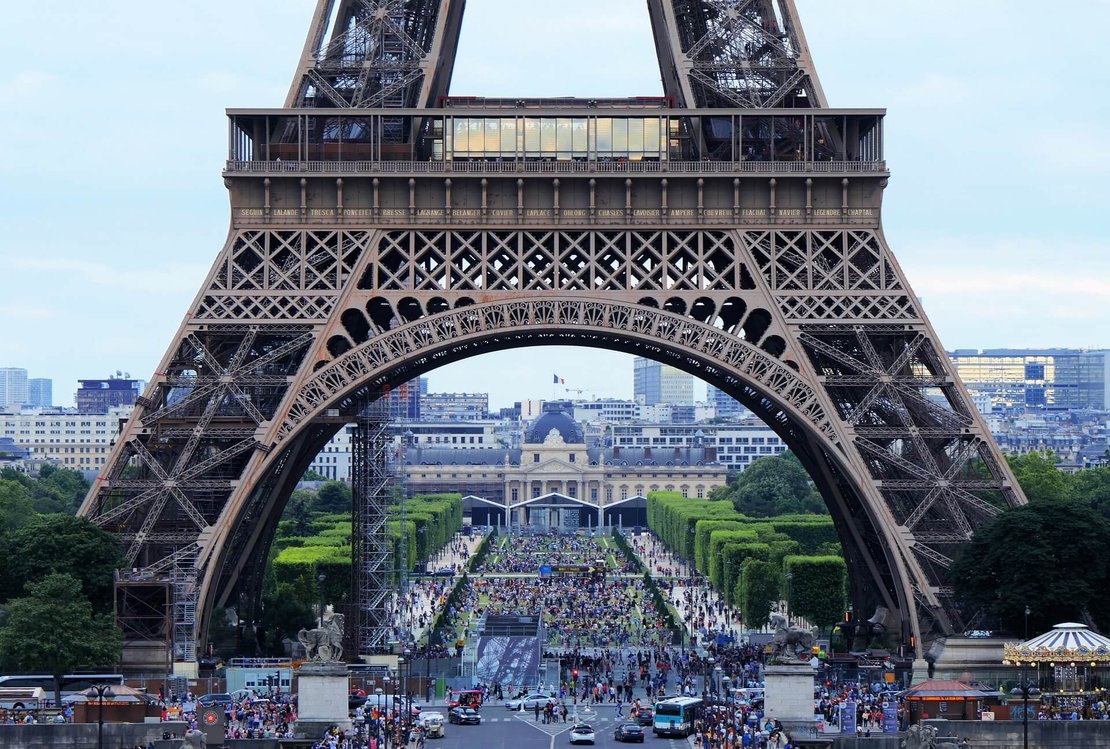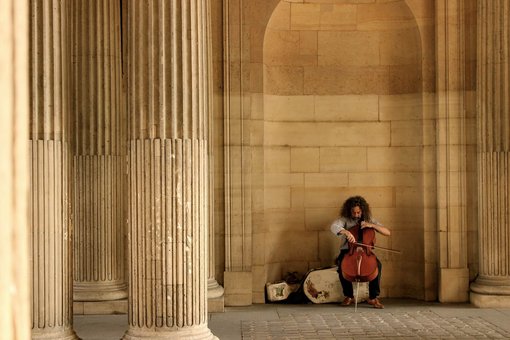10 Fun Facts About France

France is a gorgeous country with a fascinating history, a thriving culture, delicious food, and breathtaking scenery. Paris, the French Riviera, the Loire Valley, the Champagne area, and the French Alps are some of France's most visited tourist locations.
France offers a wide range of experiences for tourists, including wine tours, culinary excursions, outdoor activities, and cultural events, in addition to its well-known buildings, museums, and historical sites.
Overall, France is a fantastic travel destination for tourists of all ages and interests and offers many experiences that will leave visitors with priceless memories.
Here are some fun facts about France:
France Is Known as L’Hexagone
Because of its remarkable six-sided design, France is frequently called "l'Hexagone," which translates to "The Hexagon" in French. Early in the 20th century, the phrase was originally used to describe France, and it quickly gained popularity.
France is shaped like a hexagon because it shares borders with six other nations: Belgium, Luxembourg, Germany, Switzerland, Italy, and Spain. The form is often used to represent French nationality on maps, flags, and other national emblems.
France Is Home to the Cannes Film Festival, One of the Most Prestigious Film Festivals in the World
Some of the top names in the movie business, including actors, directors, producers, and writers, attend the Cannes Film Festival. Many movies with their world premieres at Cannes have significant box office hits, and some even take home prizes at other illustrious film festivals like the Academy Awards.
The French Riviera city of Cannes, renowned for its stunning beaches, opulent hotels, and upscale dining options, is the site of the Cannes Film Festival. Celebrities and members of the film business from all over the world are drawn to this venue because it adds to the festival's glitz and significance.
The National Motto of France Is “Liberté, éGalité, Fraternité”
France's national motto is "Liberté, Égalité, Fraternité," which translates to "Liberty, Equality, Brotherhood." This phrase was chosen in 1789 during the French Revolution and has since come to represent French culture and ideals.
The motto embodies the values of the French Revolution and the French Republic, which sought to create a society founded on social equality, democratic rule, and individual liberties. The motto is commonly used in political and cultural contexts to support French principles and goals. It is regularly seen on government buildings, coins, and stamps.
The Louvre Museum in Paris Is the Most Visited Art Museum in the World.
Some of the world's most well-known pieces of art are among the nearly 380,000 items in the Louvre Museum's collection. The Louvre Museum is home to the Mona Lisa, the Winged Victory of Samothrace, and the Venus de Milo. The Louvre Museum is located in the former Louvre Palace, an ancient royal residence built in the 12th century. The palace had a number of modifications and additions after becoming a museum in 1793.
The French Consume 11.2 Billion Glasses of Wine per Year
French people regularly drink wine, a significant aspect of their culture. France is one of the world's top producers of wine, and it is known for its wines in wine areas like Bordeaux, Burgundy, Champagne, and the Rhone Valley. However, It is important to remember that not all French people drink wine.
Younger generations in France have changed their drinking habits in recent years, consuming less alcohol overall and favoring non-alcoholic beverages. Additionally, France has strict rules and guidelines against drinking and driving, and the government regularly runs campaigns to encourage responsible drinking.
The Eiffel Tower Is One of the Most Famous Landmarks in the World
The Eiffel Tower was designed by Gustave Eiffel and completed in 1889. It was a technological marvel at the time, and now it’s a remarkable engineering achievement. One of the tallest buildings in Paris, the tower is 324 meters tall and built of iron. The Eiffel Tower is easily recognized worldwide and has evolved into an iconic representation of Paris. It is often used to symbolize France and can be found in numerous movies, literature, and other works of art.
Visitors can either take the elevator or the stairs to the top of the Eiffel Tower, where they will find breathtaking views of Paris and the surrounding area. The tower is exceptionally stunning when lit up by countless lights at night.
The Typical French Person Eats 500 Snails Annually
In several regions of France, people eat snails, a traditional delicacy. Escargot, the French name for snails, are typically prepared with garlic butter and served in their shells. Escargot is frequently offered as an appetizer in upscale restaurants and is a well-liked dish during the holiday season. The tradition of eating snails is thought to have originated in ancient Rome and is a part of France's culinary heritage.
Due to their high protein and low fat levels, snails are also regarded as a nutritious food. Snails are liked by both locals and visitors, despite the fact that some people may find the concept of eating them unappetizing.
French Toast Is Not Actually French
The dish known as French toast, often called "eggy bread" or "pain perdu" in French, is not really French in origin. French toast is thought to have originated in medieval Europe, when chefs would create new dishes using old bread that was no longer fresh. After being soaked in an egg-and-milk or cream concoction, the bread was fried till golden brown.
The fact that the dish gained popularity in America in the 18th century, when French culture was quite popular, is perhaps where the name "French toast" originates. French toast's original purpose as a way to use up bread that would otherwise go to waste is reflected in the dish's name, "pain perdu," which translates to "lost bread" in English.
France Has Won the Most Nobel Prizes for Literature
In total, 15 French authors have received the Nobel Prize in Literature as of 2021, more than any other nation. Sully Prudhomme was the first French author to receive the Nobel Prize in Literature in 1901, while Patrick Modiano was the most recent winner in 2014. Other well-known French authors who have received the honor include Samuel Beckett, André Gide, Jean-Paul Sartre, and Albert Camus.
French authors have made significant contributions to international literature, and the country has a long and rich literary legacy. French literature has impacted many authors worldwide and is renowned for its intellectual profundity, poetic language, and cultural significance.
A French Inventor Invented the Heliograph
Nicéphore Niépce, a French inventor, invented the heliograph in the early 1820s. The first permanent photograph was taken by Niépce in 1826, and he is regarded as one of the founding fathers of photography. The heliograph demonstrated the idea of using light to produce a lasting image, which was an important step in the development of photography. But because it was challenging to operate, other more dependable and simple photographic techniques soon emerged.


